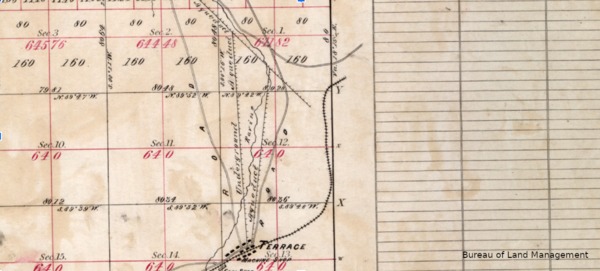Dublin Core
Title
Description
Cool, clear, water. This is more than the refrain from Marty Robbins’ classic western song. It was an absolute requirement for steam locomotive engines pushing and pulling railroad trains through Utah during the 19th and 20th centuries. Each steam locomotive had the capacity for 15,000 to 25,000 gallons of water, so they needed lots of it to keep the trains moving. As the Union and Central Pacific Railroads entered the Utah Territory in 1869, both companies faced the critical need for access to clean water.
In western Box Elder County, the track line originally built by the Central Pacific Railroad passed through the margins of the Great Salt Lake desert. Even if railroad workers could find ground water, it was likely full of minerals and salts, which are bad for steam boilers. So what do you do? If you can’t bring the trains to water, you bring water to the trains. Stations and towns along the line had large water tanks, high above the track, so trains could pull underneath and fill up. These water tanks were filled either by trains that carried extra water in special cars, or by long-distance underground pipelines.
For example, the railroad town of Terrace -- created in 1869 and abandoned in the 1910s -- relied on a 12-mile buried pipeline that brought water from the Grouse Creek Mountains in northwestern Utah. Originally, the pipeline was made from roughly cut redwood logs, with a three-and-a-half inch hole running through the center. By the 1880s, the pipeline was upgraded to iron, and an extension was built to carry water to the nearby town of Watercress. The extension was made from pipes that resembled a series of narrow barrels, with long slats of wood wrapped in metal bands. Even today, these pipes are underground to remind us of the past.
After World War II, diesel locomotives were widely adopted and the heyday of cool, clear, water on the railroad was traded over for the era of fossil fuel.
Creator
Source
_______________
See Anan Raymond and Richard Fike, Rails East to Promontory: The Utah Stations (Bureau of Land Management Utah Office: Cultural Resource Series, 1994).

